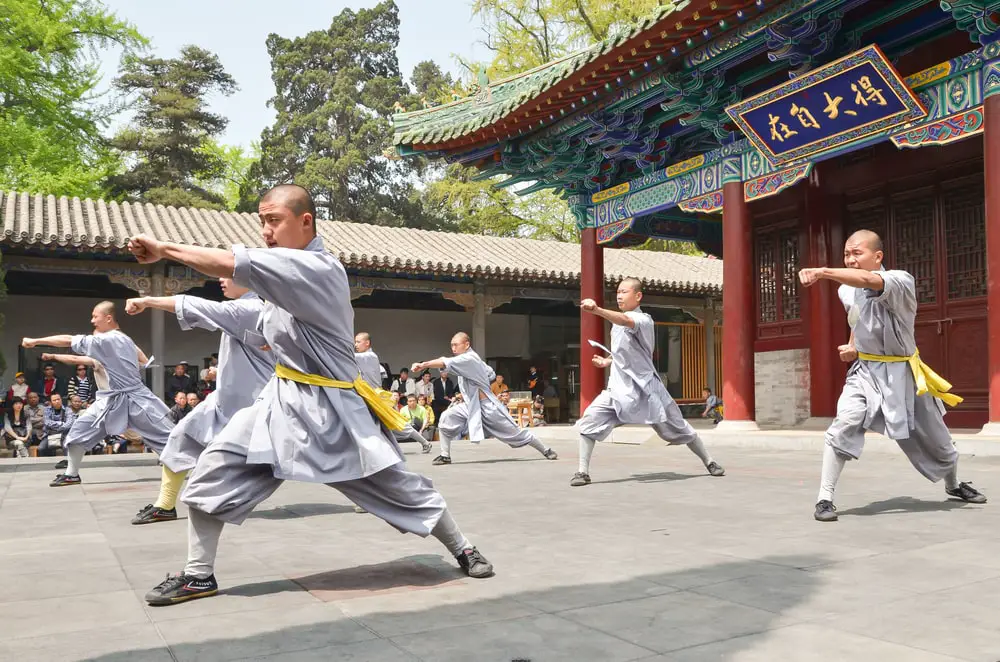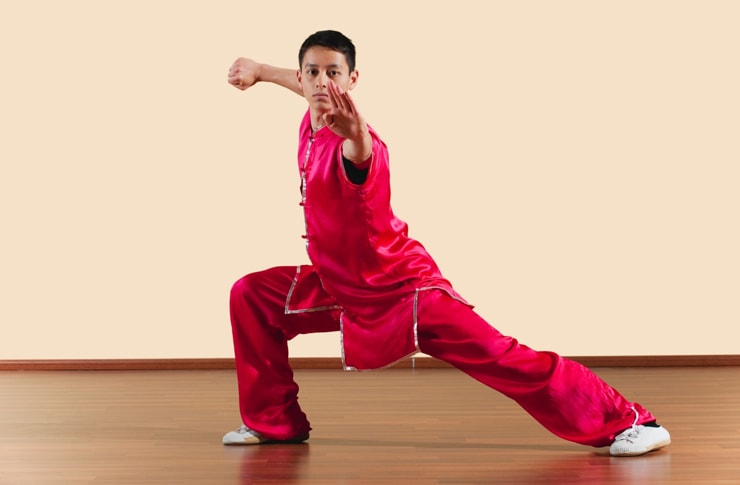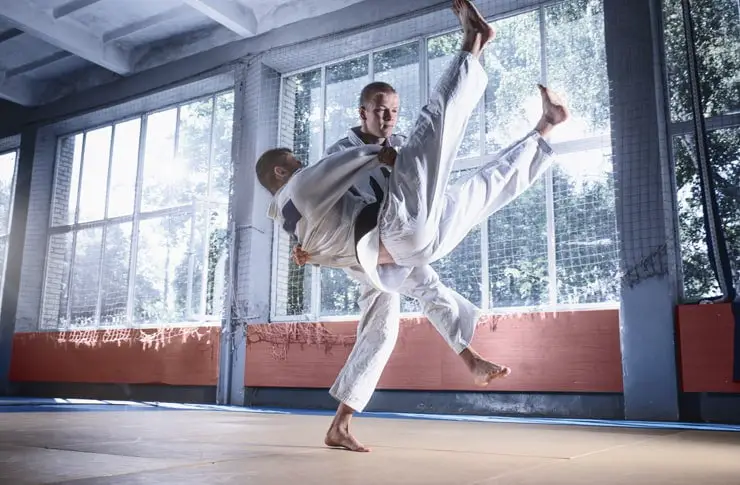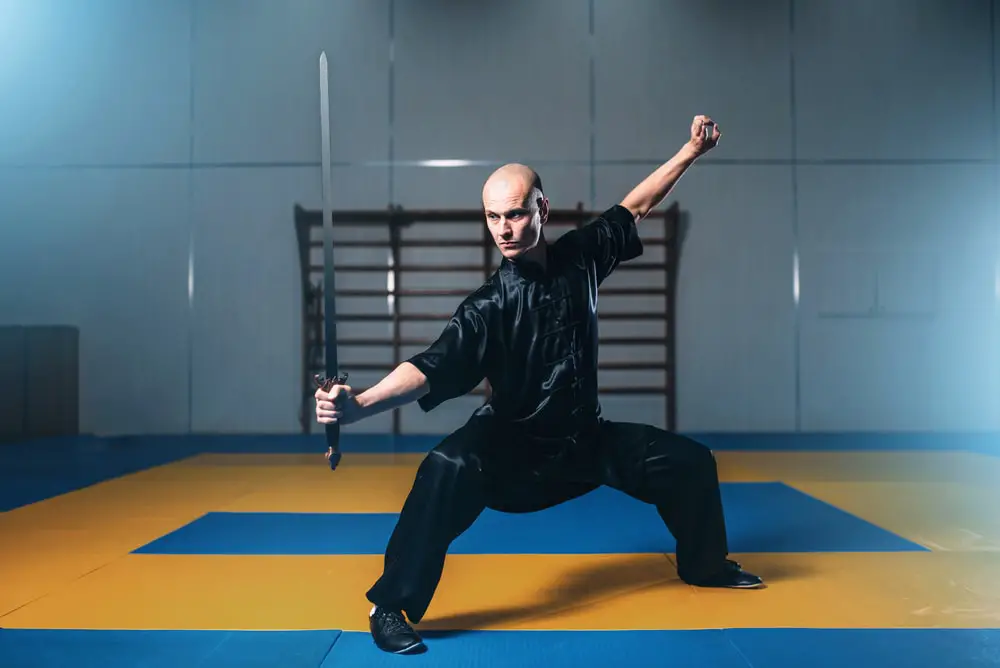The history of martial arts dates back thousands of years ago. Some believe the practice started way back to 3000 BCE. Chinese martial arts is designed to help in combat, hunt for food, and self-defense. Although it has been through some reconstruction over the years, it remains one of the most popular forms of self-defense and Chinese martial arts globally.

How it all Began
Chinese martial arts were brought into use in China around 2698 BCE. This was said to have been done by the Yellow Emperor. The Yellow Emperor both introduced martial art to the country, and studied medicine, wrote about astronomy, and was a general in war before becoming the Emperor.
The skills and techniques he discovered or designed were directly related to helping worriers be successful in hand-to-hand combat.
Around 500 BC, Confucius felt it was just as crucial to study the literary arts plus martial arts. It should be something anyone can practice. That was when a new form of Kung-Fu was born. This practice after that was used by religious leaders, citizens, and the military alike.
These practices, techniques, and skills have developed and reformed throughout the years, turning Chinese martial arts into what it is known today.
There are hundreds of forms of Chinese martial arts being practiced today throughout the world. These practices are typically named Chinese kung fu, gunshu, kuoshy, and wushu. Each martial arts style is classified into a specific “family” of Kung Fu, depending on the traits or techniques of fighting.
The Shaolin Temple
One of the first forms of Chinese martial arts was the Shaolin form. Bodhidharma is credited with bringing the Buddhist practice to China. It trained the monks in the physical form of martial arts.
There are limited sources of proof that Shaolin martial arts were originally used in combat. There is evidence to prove that it was used to protect the Shaolin Temple when it was once under attack. It was used in 621 CE, to defeat Wang Shichong during the Battle of Hulao and then more often in the proceeding years. At this time, Chinese kung fu was being practiced by monks. It was a common element of Shaolin monastery practice.
Chinese Martial Arts in the 20th Century
The early 1900s brought the fall of the Qing Dynasty and the creation of the Chinese republic. Kung fu was beginning to spread throughout China. Practitioners were requested to teach their martial arts knowledge to anyone willing to learn.
As the techniques and lessons spread, the forms of martial arts started to become structured could easily be taught and practiced in classes nationally. At this time, martial art was being seen to promote national pride, making it something everyone wanted to do to support their country. Hence, the term, Kuoshu or Guoshu, translates to “National Art”
Styles of Chinese Martial Arts

Today, there are hundreds of different styles of Chinese martial arts practiced. Each style groups into families or forms. They have their own set of philosophies and skills linking them to their specific styles. Some well-known families of Chinese martial arts styles are.
Northern Styles:
Northern Styles of Karate focuses on the lower body and quick transitions from one stance or movement to another. These forms use their legs with kicks and sweeps as their primary source of the attack, focusing on high and forceful kicks. Examples of Northern Styles include.
- Baguazhang
- Chāquán
- Chuojiao
- Eagle Claw
- Northern Praying Mantis
- Bajiquan
Southern Styles:
Southern martial arts style focuses mainly on full-body techniques and moves using the arms as your primary weapon. These forms of fighting use small steps and close fighting styles that keep their arms close to their upper bodies to use for blocks and quick striking. Examples of Southern
Styles include:
- Five family styles of Southern China: Choy Gar, Hung Ga, Lau Gar, Ng Ying Kungfu LI Family, Mok Gar
- Choy Li Fut
- Fujian White Crane
- Dog Style Kungfu
- Five Ancestors
- Wing Chun
- Southern Praying Mantis
- Hak Fu Mun
- Bak Mei
- Dragon
Religious Forms of Martial Arts: Buddhism, Taoism, and Confucianism.
There have been many forms of Chinese martial arts developed around different religious beliefs and philosophies. Such styles include the Buddhist Style, Taoist Style, and Islamic Style.
Buddhist Style

Buddhist martial arts styles are composed of their philosophy and principles. Many of these forms come from the Shaolin styles practiced within the Buddhist temples. Examples of Buddhist styles include:
- Shaolinquan
- Choy Li Fut
- Luohanquan
- Hung Gar
- Wing Chun
- Dragon style and White Crane
- Wuxingheqidao
Taoist Styles
This martial art style is composed of the fighting style used in Taoist Temples. They were used by Taoist ascetics, those trained in the Wudang Temple. These teachings often included Taoist philosophy and principles. Examples of Toaist Styles include.
- Taijiquan
- Wudangquan
- Baguazhang
- Liuhebafa.
Islamic Styles
Islamic styles are practiced by the Chinese Muslim Hui minority and include Islamic principles and beliefs. Examples of Islamic fighting style includes:
- Chāquán
- Tan Tui
- Xingyiquan (some branches),
- Bajiquan (some branches)
Chinese Martial Art Training
No matter which form of martial arts you are training in, you will go through extensive lessons and processes of learning regarding internal and external features.
Internal training- Internal training is based on the internal compounds of a human being like heart, spirit, mind, breathing, and strength.
External training- External training is based on the outside aspects such as the hands, eyes, body, and stances.
The Basics
In Chinese martial art, you are required to learn the basic skills needed to move up in rank and move forward with your training. The basics usually include endurance building, stretching, learning meditation, punches, kicks, strikes.
In every martial art class, you will learn the core beliefs, philosophy, and structure of the practice. These are important to know so you can better understand the reasoning behind the techniques and process of the class.
Meditation
In most forms of Chinese martial art, meditation plays a huge role in training. Learning how to properly meditate helps the student clear their minds, concentrate better, and focus more clearly. Meditation is a widely used practice because it helps bring the mind and body into a harmonious state.
Weapons Training
Using weapons is another widely practiced form of martial arts. Most martial arts classes do not allow their martial artist to start training with weapons until after all of their basic skills are mastered.
There are many weapons commonly used in Chinese martial art. However, there are 18 basic weapons known as the 18 weapons of Wushu. There are a few different variations of these, yet most of them include similar weapons. Three of the main versions of the 18 arms of Wushu are the Wuzazu version, water margin version, Shaolin version.

The list of the Legendary 18 weapons of China:
- Rope dart
- Double tiger hook swords
- Double hammers
- Battleax
- Snake Halberd
- Kwan Dao
- Double-edged sword
- Three-section chain whip
- Double daggers
- Double crutches
- Monk’s spade
- Staff
- Tiger fork
- Rattan shield
- Single butterfly sword
- Three-section staff
- Twin Broad sword
- Chinese Spear
Stances
Stances are another very important area in Chinese martial arts training. Every stance is specifically designed to help the martial artists structure during their movements in between strikes. This allows them to maintain balance while executing quick and precise moves.
Stances that are practice may vary depending on which form of martial arts training you are in. However, they will all focus on items like your foot position, the alignment of your body, and weight distribution.
Holding a strong, and well-balanced stance is going to be taught early on in your martial arts training. It is going to be one of the most important tools used during competitions and fights. If you are unable to keep yourself standing firmly, you risk the chance of defeat.
Martial Art Then and Now
Historically, the martial art was designed to take down, immobilize, and even eliminate your opponent during combat and self-defence. As time has gone on, the styles and techniques used today have been modified.
They are geared more towards the modern-day idealism of the practices making the moves look more rhythmic and has more aerobic and unrealistic kicks and flips that wouldn’t be possible in a combat sport. These changes make watching the art more pleasing to view for audiences watching competitions but make traditional practitioners not so happy.
We can thank Hollywood for the changes as well, as movie producers requested a lot of changes throughout the years to make their movies look extremely exciting, executing movements, flips, and twists that wouldn’t be helpful in any way during combat.
Conclusion
Chinese martial arts have gone through many different changes throughout the years and as they get passed from country to country, however, the beliefs and basics are still very much the same and can be an amazing form of self-defence practice for anyone interested in martial art.
